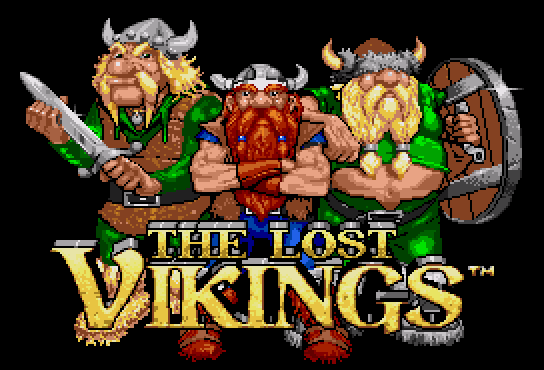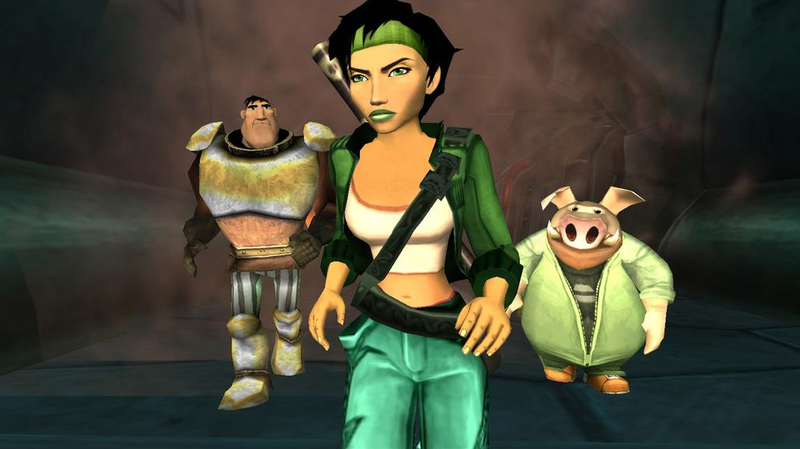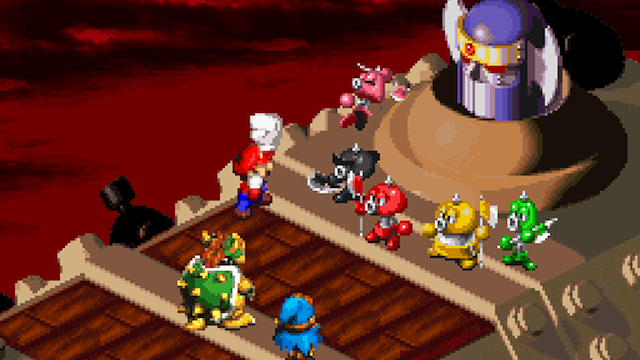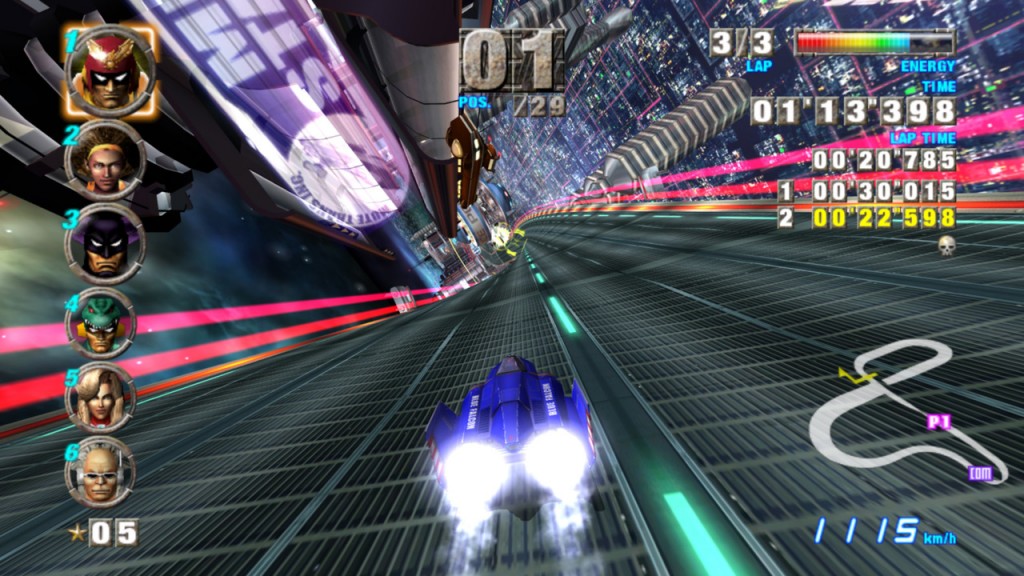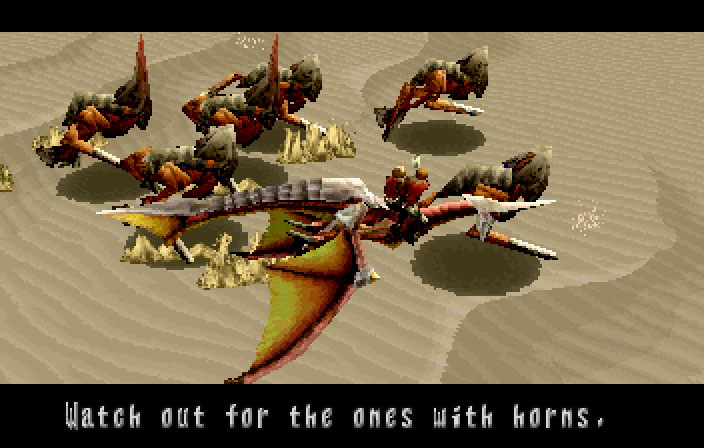By Nigel Spudes
Remakes and re-releases of classic video games can seem like bloodless cash-ins designed to rake in consumer dollars with established brands and minimal studio effort, especially when they take the place of new, original content on a console’s release schedule. With the right game and approach, however, resurrected titles can allow dedicated fans to experience a classic in a new way and bring the uninitiated up to speed on a great game they might never have gotten their hands on otherwise.
At the moment, few consoles have a library or design to rival the Nintendo 3DS. Along with its sibling, the Nintendo DS, with which it’s backward compatible, the 3DS has a rich library that leans heavily on genres that have fallen out of prominence in recent years, like platformers, RPGs, and adventure games. On the visuals front, it can reasonably handle graphics approaching those of the sixth generation of home consoles (or even surpassing them with the beefed-up New 3DS and its upcoming remake of underground classic Wii title Xenoblade Chronicles). The 3DS and DS have already played host to a number of successful remakes and ports, including Starfox 64, a bevy of games in the Legend of Zelda series, Super Nintendo godheads Chrono Trigger and Donkey Kong Country, and even a title from the Metal Gear Solid series. No console is better suited to shepherd the return to prominence of classic games than one that’s staging its own miniature classic gaming renaissance.
Of all the titles that have seen ports and enhanced remakes on Nintendo’s DS family of consoles, there are still quite a few that are long overdue for a glitzy second shot on the 3DS’ small screen. Some just never received the type of fame they were due upon release, while others just happen to fit the current gaming climate well enough to be obvious choices for a new life on Nintendo’s current handheld.
The Lost Vikings 1 & 2 (Super Nintendo, 1992/1997, Silicon & Synapse/Blizzard Entertainment)
If you don’t associate the studio behind the Diablo, Starcraft, and Warcraft games with a pair of quirky sci-fi puzzle platformers about a bunch of Vikings, well…you’re pretty much in line with the rest of the world. Overshadowed by Blizzard’s later successes, these were nonetheless a couple of cute, weird gems. Trapped in outer space by the evil emperor Tomator, Vikings Erik, Olaf, and Baleog must use their unique skills to escape diverse alien environments and find their way home. Erik’s strengths are his speed, his jump, and his ability to headbutt walls and enemies. Olaf is equipped with a shield, which allows him to block enemy attacks, create a platform for Erik when holding it above his head, and glide with it across expanses. Baleog, the weapons expert, is equipped with a sword and a bow, which can be used to dispose of enemies or manipulate the environment. The player only controls one Viking at a time and must maneuver them each into position and clear the way for the others through use of their special abilities in order to progress through each setting. Puzzlers and platformers are right at home on the 3DS, and play on a handheld would carry over naturally (the first game was ported over to the Game Boy Advance in 2003). Make this one a bundle, add some basic touchscreen functionality (inventory, character switching), and do an overhaul on the graphics (mostly for the first game; five years made a big difference in the nineties), and you’ve got a package that would still resonate today.
Beyond Good and Evil (Multi-platform, 2003, Ubisoft)
This sci-fi action-platformer is about a photojournalist uncovering a human trafficking conspiracy with the help of an anthropomorphic pig—why, yes, you read all of that right. The fact that Beyond Good and Evil’s main character and plot are still uncommon twelve years later, while genuinely depressing in terms of race and gender, speaks volumes to the fact that it needs a high profile re-release (read: not just digital) in the near future. This game oozes character and feels more like playing through some lost eighties alt comic than it does similar third-person action games of the era. Jade, the game’s main character (a woman of color, sadly still a rarity in modern games) must gather photographic evidence and liaise with operatives to bring to light government misdeeds, and the way the game positions the player at the center of the action makes uncovering the conspiracy feel important and organic.
Most of the interactions with the game’s world take place through use of one action button whose action differs depending on the situation (climb, attack, etc.) and another that offers limited control of an ally’s attack function. Gameplay takes place within a semi-open world; piloting vehicles and exploring cities gives way to more linear “levels” inside settings like factories and caves. While critically acclaimed, the game was a commercial failure at the time of its release. In the intervening years, it has gained a strong following and saw re-release digitally on several platforms. Since work has officially been announced on a sequel, however, it’s about time for a souped-up handheld version. With photography figuring so prominently into the game’s plot, adding functionality for the 3DS camera would seem a natural fit (although implementing it properly might prove tricky). Tweak some of the mechanics, optimize it for the platform, and you’ve got a smart, unique experience that still has far too few peers today.
Super Mario RPG: Legend of the Seven Stars (Super Nintendo, 1996, Square)
How’s that for truth in titling? Super Mario RPG was the first roleplaying game to feature Nintendo’s ubiquitous plumber, a space now also occupied by the successful Paper Mario and Mario & Luigi franchises. Developed by Square (yeah, Final Fantasy, Chrono Trigger, Secret of Mana Square, now Square Enix) and featuring a style similar to its most classic RPG titles, Super Mario RPG saw the player guiding Mario through turn-based battles and 2.5D top-down platforming sections. The game took a left turn from the standard Mario-saves-the-Princess story, seeing our mustachioed hero joined by Peach, Bowser, and newcomers Mallow and Geno to defeat the interloping Smithy Gang and restore the destroyed Star Road by collecting the titular seven stars. Sure, it’s since seen a digital release on the Wii virtual console, but the game screams 3DS: Square Enix’s RPG “return-to-form” Bravely Default and a truckload of Mario games (including the above-mentioned RPGs) have been some of the handheld console’s biggest sellers. Its cutesy, gorgeous graphics would kill on the handheld, and frankly, the 3DS’ library (as well as its control scheme) are much better suited to this type of game than the Wii or its successor ever will be. Give it a physical release, a graphical spit-shine, and an extra bell or whistle here and there, and this game could be a bona fide hit in 2015’s games climate. More importantly, though, it’s a chance to introduce a new generation of Mario fans to one of his strongest adventures (and a game even plumber-haters can get behind).
F-Zero GX (GameCube, 2003, Amusement Vision)
Outside of the Super Smash Brothers games, which feature F-Zero franchise main character Captain Falcon in all of its iterations, it’s easy to forget that Nintendo’s got a classic racing property in its stable that isn’t Mario Kart. The flashy, hardcore cousin to Nintendo’s cutesy karter, F-Zero has always been the lower profile series, though no less beloved by gaming purists. F-Zero GX features Captain Falcon piloting a stable of super-powered futuristic vehicles against up to 29 competitors on a series of twisting, curving, looping tracks. Most notably, this game is fast. Speeds of most races rest around 900 kph, and with proper boosting (and no blinking) a good run can approach 2000 kph. Its difficulty level is punishing, but the sheer craft at work makes that difficulty bearable. The original had the standard local multiplayer options and played the way you’d expect it to. Considering it’s 2015, however, the options become a lot more exciting. Outfitted with online multiplayer on the 3DS, F-Zero GX would be a juggernaut—try not to imagine the glory of getting your butt kicked by 29 Swedish ten-year-olds at 1200 kph in dizzying 3D. Let’s also remember that there hasn’t been a proper F-Zero game since the 2004 release of F-Zero Climax on the Game Boy Advance. Quick, competitive and great to look at, F-Zero GX needs to come to the 3DS. The future depends on it.
Panzer Dragoon Saga (Sega Saturn, 1998, Team Andomeda)
Let’s be clear here: every Panzer Dragoon game should be on this list. The three rail shooters of the series are almost as awesome as this title and feature amazing, engrossing settings that rival any Shadow of the Colossus or Psychonauts while constrained within ultra-linear gameplay mechanics that would translate to the 3DS every bit as well. (For proof, see 2012’s lauded Kid Icarus Uprising, which borrows a similar on-rails style.) What gives this title the edge over the rest of the series is just its sense of more. More post-apocalyptic world-building, more customization, more story, and most especially, more combat options. This RPG finds young Imperial soldier Edge controlling a flying dragon both in battles and travels across the overworld. The dragon, who can be nicknamed by the player, can be mutated into different forms at will outside of combat by adjusting the totals of four attributes (attack, defense, agility and berserk), which will gradually alter its appearance. Combat is a hybrid of turn-based and real-time, and features use of both Edge’s gun and the dragon’s homing laser, as well as special “berserk” magic attacks, but its biggest innovation is the ability for the dragon to change positions fluidly during battle. The dragon can speed up or slow down while flying, which lets it exploit weaknesses or avoid especially dangerous attacks, and strategic positioning during combat is key to winning Saga’s tougher battles.
The game’s outside history is as complex as its internal lore; released during the end of the Saturn’s life, only about 30,000 copies were made in the US due to flagging sales numbers. For this reason, it’s tough to come by and fetches a price that makes it only viable for collectors and the obsessed. To further complicate things, director Yukio Futatsugi claims that the source code has been lost, making a direct port impossible. This would necessitate a full rebuild of the game. Since the Saturn is a notoriously ugly console, some cosmetic work would have been necessary anyway, and the overworld controls could certainly use a tweak, so in the long run, an update could be a boon. If a studio were given the resources needed to remake this title, it could make a massive impact on the 3DS, due in part to the original release’s “white whale” status. A game this strange and inspired should have its chance to reach its proper audience (and a remake would be a lot simpler than lending my copy to everyone on the planet).
What lost or forgotten game deserves a new life on the 3DS?


